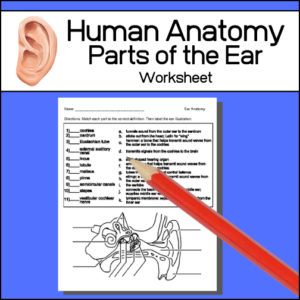Showing 221–229 of 229 results
-
$1.00Buy Now
This worksheet has two parts for students to complete: Matching the part name with the definition and labeling the ear. Answer key provided
Parts: cochlea, eardrum, Eustachian tube, external auditory canal, incus, lobule, malleus, pinna, semicircular canals, stapes, vestibulare cochlear nerve
-
$1.50Buy Now
Studying penguins or perhaps animals of the arctic? This cute shape book is ready for students to use to publish there own stories, reports or poems about penguins!
I’ve created pages with both dotted-dashed lines as well as single lines so that you can use what best fits the level of your students.
-
$3.00Buy Now
This Science resource has been designed to help students learn the phases of cellular division / reproduction through the process of mitosis. Phases outlined: Interphase, Prophase, Metaphase, Anaphase, Telophase and Cytokinesis. I’ve include both color and b/w posters / handout, with and without explanations of what actually occurs during each phase.
-
$2.00Buy Now
Here are 2 ready to use Venn Diagram Science activities for students to use to compare 2 or 3 insects. On each, students will list the insects they will compare and contrast, draw a picture of each and then complete the Venn Diagram.
Extend the activity by asking students to write a paragraph or short report about their discoveries!
-
$9.99Buy Now
190 page Marine Science Teacher Edition to use along side the Marine Science Student Edition
Units include: The Hydrosphere, Measuring the Ocean, The Nature of Seawater, Waves, Tides, Ocean Currents, The Ocean Floor, Ocean Sediments, Food Chains & Webs, Ocean Zones, Near-shore Ecosystems, Plankton, Marine Plants, Classifying Marine Animals, Cold-blooded Swimmers, Marine Mammals, Marine Pollution, Marine Resources
-
$3.00Buy Now
Bird of the Arctic – Willow Ptarmigan is a cross-curricular resource (Reading, Writing, Science and Geography) that you can use as a stand alone product or as a supplement to related thematic and/or unit studies. Great to use if you are studying: Habitats, Arctic animals, Alaska, Birds, State birds, Ornithology










